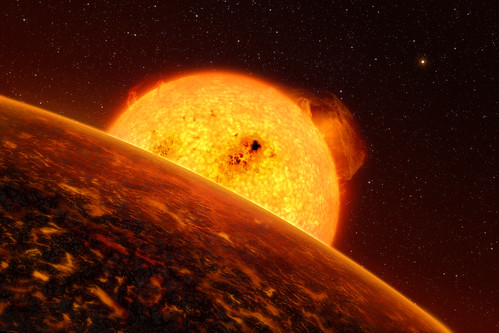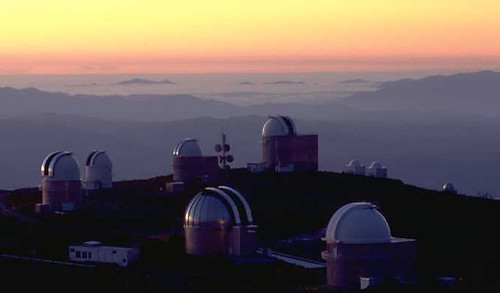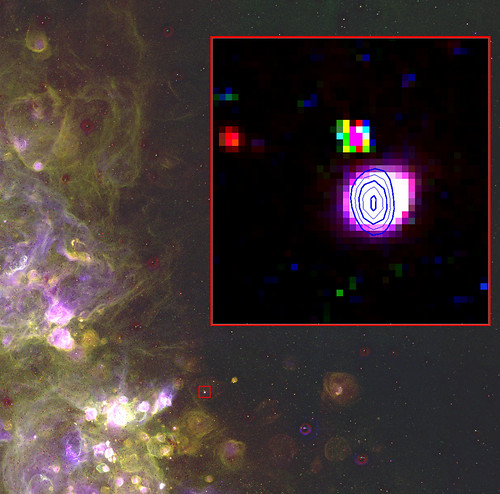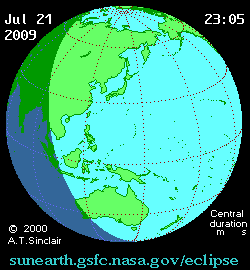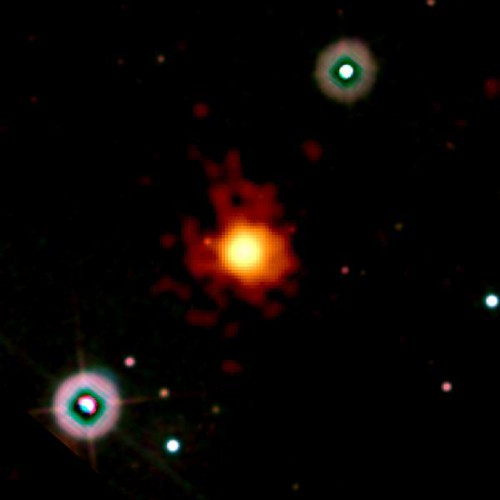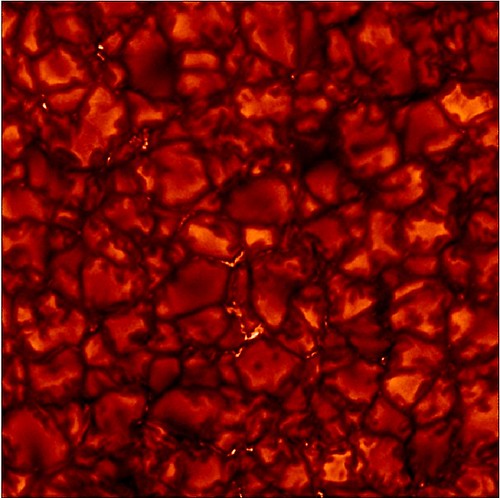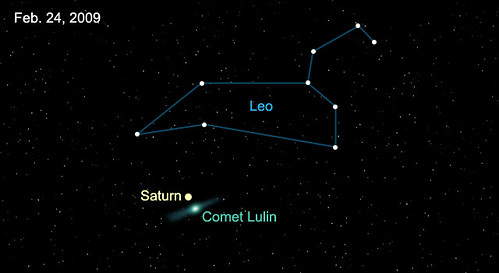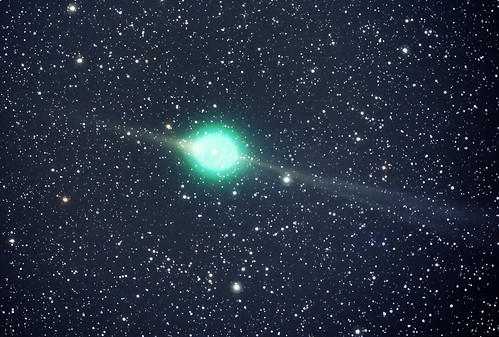No, not your own fireworks — playing with chemistry at home is dangerous. We’re talking dazzling astronomic observation, as this "image of the day" from NASA:

Stars and a Stripe in Celestial Fireworks
A delicate ribbon of gas floats eerily in our galaxy. A contrail from an alien spaceship? A jet from a black-hole? Actually this image, taken by NASA’s Hubble Space Telescope, is a very thin section of a supernova remnant caused by a stellar explosion that occurred more than 1,000 years ago.
Around May 1, 1006 A.D., observers from Africa to Europe to the Far East witnessed and recorded the arrival of light from what is now called SN 1006, a tremendous supernova explosion caused by the final death throes of a white dwarf star nearly 7,000 light-years away. The supernova was probably the brightest star ever seen by humans, and surpassed Venus as the brightest object in the night time sky, only to be surpassed by the moon. It was visible even during the day for weeks, and remained visible to the naked eye for at least two and a half years before fading away.
It wasn’t until the mid-1960s that radio astronomers first detected a nearly circular ring of material at the recorded position of the supernova. The ring was almost 30 arcminutes across, the same angular diameter as the full moon. The size of the remnant implied that the blast wave from the supernova had expanded at nearly 20 million miles per hour over the nearly 1,000 years since the explosion occurred.
Today, SN 1006 has a diameter of nearly 60 light-years, and it is still expanding at roughly 6 million miles per hour. Even at this tremendous speed, however, it takes observations typically separated by years to see significant outward motion of the shock wave against the grid of background stars. In the Hubble image as displayed, the supernova would have occurred far off the lower right corner of the image, and the motion would be toward the upper left.
Image Credit: NASA, ESA, and the Hubble Heritage Team (STScI/AURA)

But NASA is predicting a planetary alignment for today and this weekend, via PhysOrg.com:
The show gets going on Friday, July 4th. Red Mars and ringed Saturn converge just to the left of the bright star Regulus. The three lights make a pretty 1st-magnitude line in the heavens.
But that is just the beginning. On Saturday, July 5th, with weekend fireworks at fever pitch, a lovely crescent Moon joins the show. Saturn, Mars, and the Moon trace an even brighter line than the night before.
Scan a small telescope along the line. You’ll see Saturn’s rings, the little red disk of Mars, a grand sweep of lunar mountains and craters, and just maybe—flash!—a manmade incendiary. How often do you see fireworks through a telescope?
This is, however, more than just a flashy gathering of planets—it is also a gathering of spaceships and robots.
Each of the three worlds is orbited or inhabited by probes from Earth. Saturn has the Cassini spacecraft, studying the gas giant’s storms, moons and rings. The Moon has two probes in orbit: Kaguya from Japan and Chang’e-1 from China. The pair, operating independently, are mapping the Moon and scanning for resources in advance of future human landings. NASA’s Lunar Reconnaissance Orbiter will join them later this year.
Mars has more probes than the others combined. Three active satellites orbit the red planet: Europe’s Mars Express and NASA’s Mars Odyssey and Mars Reconnaissance Orbiter. The three not only study Mars with their own instruments, but also form a satellite network in support of NASA’s Mars rovers Spirit and Opportunity and Mars lander Phoenix.
None of these mechanical specks are visible in a backyard telescope, but they are there, heralds of a growing human presence in the solar system. Tell that to your buddy at the fireworks show!
During the short night of July 5th, the Moon glides past Mars and Saturn so that nightfall on Sunday, July 6th, brings a different arrangement—a scalene triangle. The triad is easy to find in the hours after sunset. Look west and let the Moon be your guide.
In the nights that follow, the Moon exits stage left, leaving the others behind. Don’t stop watching, though. Saturn and Mars are converging for their closest encounter of the next 14 years. After nightfall on Thursday, July 10th, the two planets will be just ¾ of a degree apart, snug enough to fit behind the tip of your pinky finger held at arm’s length.
Now that’s spectacular—no fireworks required.
Cool. No smoke, fire or noise. There’s more than enough of that going on around you. To all the rocket scientist in the U.S., have a great 4th of July.
